Intraoral 3D Scanner
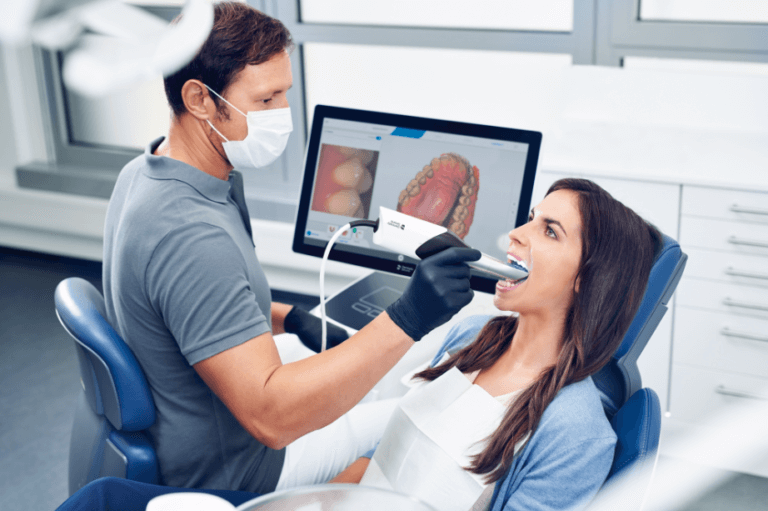
What Is an Intraoral 3D Scanner?
In the rapidly evolving landscape of modern dentistry, technological advancements continue to reshape the way oral health professionals diagnose, treat, and monitor patients. One such innovation that has gained significant prominence is the Intraoral 3d Scanner. This cutting-edge device represents a revolutionary leap from traditional dental impressions, offering a more accurate, comfortable, and efficient means of capturing detailed images of a patient’s oral cavity.
By utilizing advanced imaging technology, these hand-held want-like devices capture intricate details of the mouth’s anatomy, creating a virtual model that allows dentists to diagnose issues, plan treatments, and create accurate dental appliances with unparalleled precision.
Before deciding on whether Intraoral 3D Scanning are right for you, there are some things you should know:
- What Brands of Intraoral Scanner Are There?
- What Procedures Can Benefit from Intraoral 3D Scanning?
- What Are the Advantages of Intraoral 3D Scanning?
- What Are the Steps in the Intraoral 3D Scanning Procedure?
- Can I Have Intraoral 3D Scanning If I Am Pregnant?
If you have any further questions about Intraoral 3D Scanning or other dental services offered at Atlas Dental, please contact us.

Free phone consultation
Have questions about CBCT Scans? Schedule a free phone consultation with our Toronto dentist.

5 star google reviews
Our patients love us! See for yourself why more and more people are choosing Atlas Dental for their CBCT Scans.

Book CBCT Scan Online
We provide quick and convenient CBCT Scan Service in Toronto. Book Online.
What Brands of Intraoral Scanner Are There?
There are several reputable brands in the market that offer intraoral 3D scanners for dental professionals. Some well-known brands include:
- Medit: Medit’s scanners are appreciated for their speed and accuracy, catering to both dental clinics and laboratories.
- 3Shape Trios: Known for their advanced technology and user-friendly design, 3Shape offers a range of intraoral scanners suitable for various dental applications.
- Itero by Align Technology: Itero scanners, part of Align Technology, are prominent in the clear aligner field, with precise scanning capabilities for orthodontic applications.
- Cerec by Dentsply Sirona: Cerec scanners are known for their chairside restorative solutions, enabling same-day dental restorations.
- Kulzer: Kulzer’s scanners offer high-resolution imaging and intuitive software, contributing to enhanced treatment outcomes.
- Planmeca: Planmeca’s intraoral scanners are renowned for their accuracy and versatility, making them suitable for a wide range of dental procedures.
These are just a few examples of the many intraoral scanner brands available. Dental professionals often choose a scanner based on factors such as their specific practice needs, preferred features, and compatibility with their existing dental technology ecosystem. If you have further questions about Intraoral 3D Scanner, please contact us.
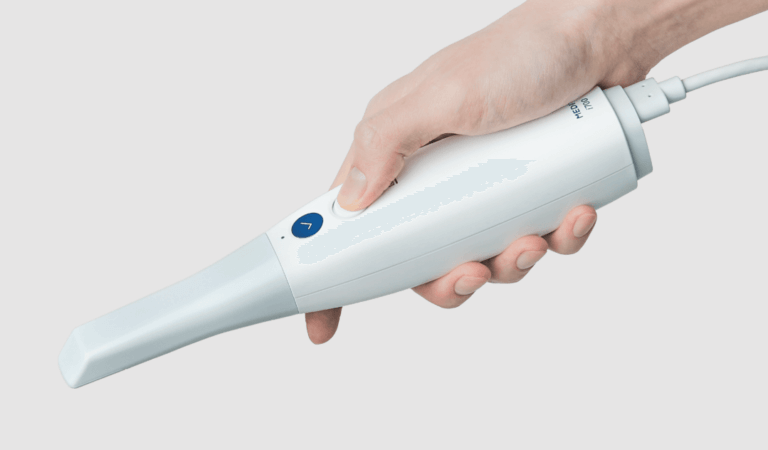
What Procedures Can Benefit from Intraoral 3D Scanning?
The capabilities of intraoral 3D scanning technology span across a comprehensive array of dental procedures, introducing a new era of precision and patient-centric care:
- Invisalign Clear Aligner Therapy: Intraoral 3D scanning has redefined orthodontics, providing a comfortable and accurate alternative to conventional impressions. These scanners play a vital role in the creation of clear aligners, like Invisalign, by capturing precise digital models of teeth and bite. Orthodontists use these models to design aligners that guide teeth into proper alignment, delivering effective and aesthetically pleasing results.
- Restorative Dentistry – Crowns, Veneers, Inlays, Onlays and Bridges: When it comes to crafting dental crowns, veneers, inlays, onlays and bridges, intraoral 3D scanners shine. They create intricate digital impressions of teeth, enabling dentists to design restorations that fit seamlessly and restore both function and aesthetics.
- Dental Implants: Both implant placement and crown restoration are streamlined with intraoral 3D scanning. These scanners aid oral surgeons and restorative dentists in mapping implant sites with precision when combined with a CBCT scan for computer guided dental implant surgery. Once the implant has fully osseointegrated, intraoral 3D scanning is then used to create implant crowns, ensuring optimal fit and aesthetics.
- Dentures and Removable Retainers: Intraoral 3D scanning ensures a comfortable fit for dentures and removable retainers. By capturing accurate oral impressions, these scanners contribute to creating dentures that rest naturally and securely, while also enhancing the design of other dental prosthetics.
From orthodontics with clear aligners to crafting dental crowns, veneers, bridges, and implants, and from dentures to inlays and onlays, the applications of intraoral 3D scanning touch every corner of modern dentistry. This technology not only elevates the precision of dental procedures but also enhances patient comfort and engagement. If you have further questions about Intraoral 3D Scanner, please contact us.
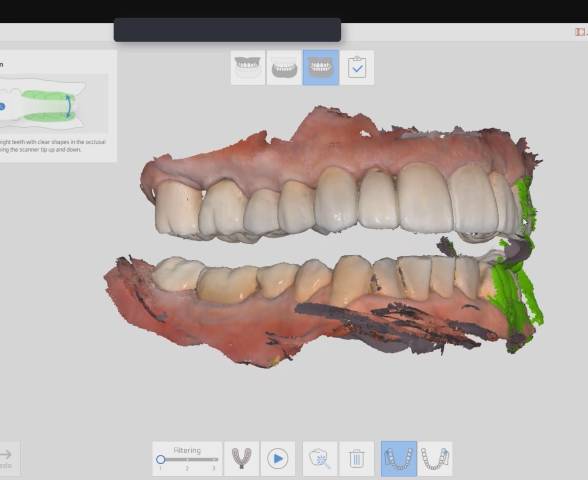
What Are the Advantages of Intraoral 3D Scanning?
Intraoral 3D scanners have ushered in a new era of dental care, revolutionizing the way oral health professionals approach diagnostics, treatment planning, and patient interactions. The adoption of this technology brings forth a multitude of advantages:
- Enhanced Accuracy and Precision: Intraoral 3D scanners capture incredibly detailed images of the oral cavity, leaving little room for inaccuracies. This level of precision surpasses traditional methods, leading to more accurate diagnoses, better treatment planning, and restorations that fit seamlessly.
- Patient Comfort and Convenience: The discomfort associated with traditional dental impressions is virtually eliminated with intraoral 3D scanning. Patients no longer need to endure the sensation of impression material, contributing to a more comfortable and stress-free dental experience.
- Time Efficiency: Gone are the days of extended impression-taking sessions. Intraoral 3D scanning significantly reduces the time needed for data collection. This not only enhances patient satisfaction but also enables practitioners to optimize their schedules more effectively.
- Immediate Visual Feedback: One of the standout advantages of intraoral 3D scanning is its ability to provide real-time visual feedback. Dental professionals can instantly showcase digital models to patients, enhancing communication and ensuring a deeper understanding of diagnoses and treatment plans.
- Streamlined Treatment Planning: The digital models generated by intraoral 3D scanners serve as a foundation for comprehensive treatment planning. With these accurate representations, dental practitioners can design and customize treatment regimens that are tailored to each patient’s unique needs.
- Reduced Need for Remakes and Adjustments: Inaccurate impressions can lead to the need for remakes and adjustments, prolonging treatment timelines. Intraoral 3D scanning minimizes the chances of errors, resulting in restorations, appliances, and prosthetics that fit correctly on the first attempt.
- Improved Patient Education: The visual nature of digital models aids in patient education. Dentists can use these models to explain oral health conditions, treatment options, and expected outcomes more comprehensively, empowering patients to make informed decisions about their care.
- Digital Record Keeping: Intraoral 3D scanning contributes to the digital transformation of dental practices. The captured digital models can be stored electronically, simplifying record-keeping and enhancing accessibility for future reference.
- Collaboration and Communication: Intraoral 3D scanning facilitates seamless communication between dental professionals, laboratories, and specialists. The ability to share accurate digital models fosters collaboration, ensuring that all parties are on the same page throughout the treatment process.
- Reduced Environmental Impact: By eliminating the need for physical impression materials, intraoral 3D scanning contributes to a greener and more environmentally-friendly dental practice.
In conclusion, the advantages of intraoral 3D scanners are profound and far-reaching. They elevate the standard of care, enhance patient experiences, and streamline dental workflows, all while embracing the technological advancements of the digital age. If you have further questions about Intraoral 3D Scanner, please contact us.
What Are the Steps in the Intraoral 3D Scanning Procedure?
The process of using an intraoral 3D scanner involves a series of systematic steps that seamlessly capture detailed images of the oral cavity. This advanced procedure replaces traditional impressions with a more comfortable and efficient digital alternative:
- Preparation, Isolation and Dry Field: The procedure begins with proper patient preparation. Maintaining a dry field is crucial for accurate scanning. Dental professionals often use absorbent materials and/or isolation techniques to prevent excess saliva or moisture from affecting the scan quality.
- Placement of Reflective Markers (Optional): In some cases, reflective markers might be placed on the patient’s teeth or adjacent structures. These markers aid the scanner in creating a comprehensive digital model by tracking their movement and orientation during the scan.
- Scanning Process: The dental practitioner operates the intraoral 3D scanner, which resembles a small wand or pen-like device. The scanner is maneuvered throughout the oral cavity, capturing multiple images from various angles. The device emits a safe non-ionizing light within the visible light spectrum to gather data, which is then processed into a coherent digital model. As the scanner captures images, they are displayed on a screen, allowing both the dental professional and the patient to see the details being captured.
- Data Processing and Dental Lab Submission:: Once the scanning is complete, the collected data is processed by specialized software. The software stitches together the individual images to create a comprehensive 3D digital model of the patient’s oral cavity. When this data is shared with the dental laboratory, the digital model can be used to make an assortment of dental appliances, including dental implant crowns, conventional dental crowns, bridges, Invisalign clear aligners, dentures, and more.
In summary, the intraoral 3D scanning procedure transforms the way dental data is collected and utilized. From initial preparations to the creation of a comprehensive digital model, this technology streamlines the diagnostic and treatment planning process, leading to more accurate and efficient oral healthcare practices. If you have further questions about Intraoral 3D Scanner, please contact us.
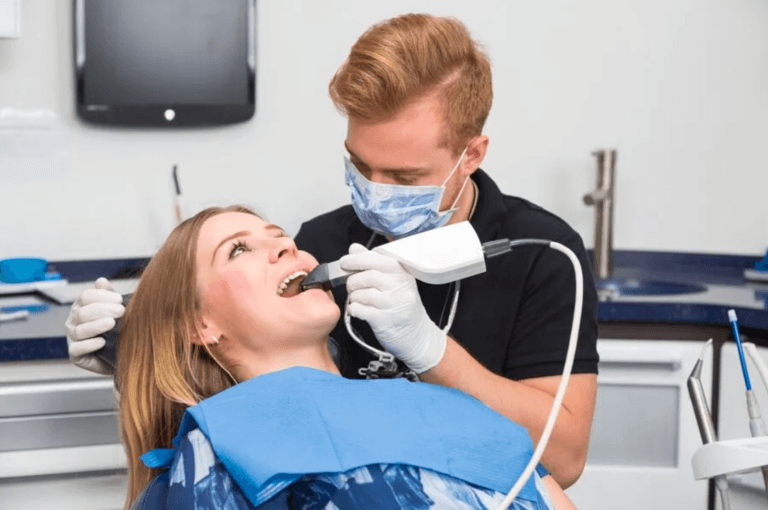
Can I Have Intraoral 3D Scanning If I Am Pregnant?
While intraoral 3D scanning is generally considered safe for pregnant women, it’s important to communicate your pregnancy status with your dental professional to address any potential risks for those who are expecting:
- Safety Considerations: In general, intraoral 3D scanning is considered safe and non-invasive. The technology uses light or laser to capture images of the oral cavity, eliminating the need for potentially harmful radiation. As a result, the procedure itself poses minimal risk to both pregnant individuals and their unborn children.
- Guidelines and Consultation: However, while the procedure is generally safe, it’s recommended to inform your dental professional if you are pregnant or suspect you might be pregnant. Dental practitioners prioritize patient safety and will consider individual circumstances before proceeding with any procedure, including intraoral 3D scanning. In some cases, the dental team might choose to postpone non-essential procedures until after the pregnancy to ensure absolute peace of mind. If the procedure is deemed necessary for your oral health, your dentist will take precautions to minimize any potential risks.
- Protective Measures: If it’s determined that you require intraoral 3D scanning during your pregnancy, your dental professional may take extra precautions to ensure your safety and comfort. This might involve discussing the procedure’s benefits and risks, as well as the necessity of the scan in relation to your overall dental care.
- Alternative Approaches: In cases where the risk-to-benefit ratio is a concern, your dental practitioner might explore alternative methods to address your dental needs. These could involve using other diagnostic techniques or opting for treatment approaches that do not involve imaging.
- Open Communication: The key to making informed decisions during pregnancy is open and transparent communication with your dental care provider. If you have any concerns or questions about intraoral 3D scanning or any other dental procedure, don’t hesitate to discuss them with your dentist. They will work with you to develop a treatment plan that prioritizes both your oral health and the well-being of your pregnancy.
By working together and considering individual circumstances, you can make informed decisions that ensure the best possible care for both you and your developing baby. If you have further questions about Intraoral 3D Scanner, please contact us.
We also think you’ll like…
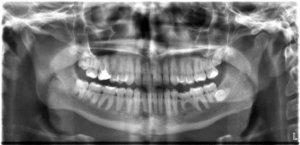
Panoramic X-Ray
Panoramic X-Ray What Is A Panoramic X-Ray Scan? A Panoramic X-Ray scan, also known as a Panoramic radiograph or orthopantomogram (OPG), is a specialized 2D
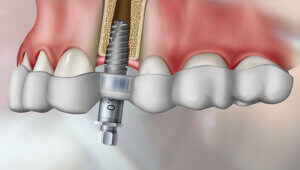
Computer Guided Dental Implant Surgery
Computer Guided Dental Implant Surgery What Is Computer Guided Dental Implant Surgery? Computer guided dental implant surgery is a specialized technique that employs advanced computer
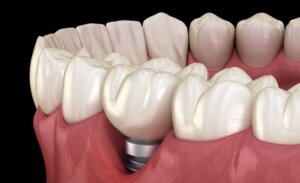
Dental Implant Failure
Dental Implant Failure What Is Dental Implant Failure? Dental implants are one of the most popular and effective solutions for replacing missing teeth. They are
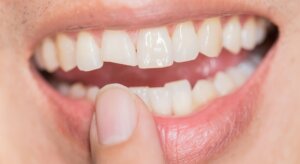
Chipped Dental Implant Bridge
Chipped Dental Implant Bridge What Is A Chipped Dental Implant Bridge? A dental implant bridge is a type of dental prosthetic that is used to
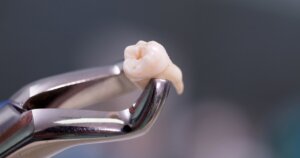
Wisdom Tooth Removal Pre-Operative Instructions
Wisdom Tooth Removal Pre-Operative Instructions What You Should Do Before Your Wisdom Tooth Extraction Surgery Wisdom tooth extraction is a surgical procedure to remove one
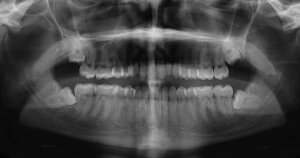
Wisdom Tooth Removal Consent Form
Wisdom Tooth Removal Consent Form There will be some pain, swelling and bleeding following a tooth extraction. This may require pain-relieving medication. Bleeding is usually

